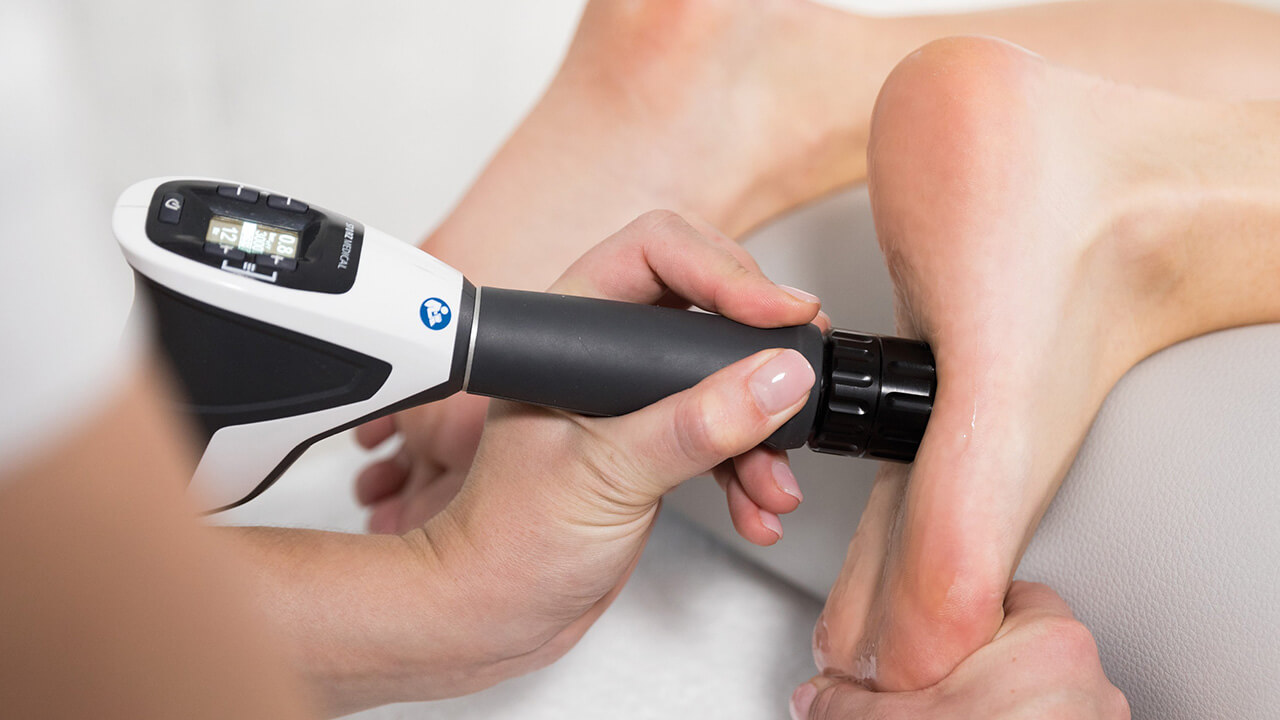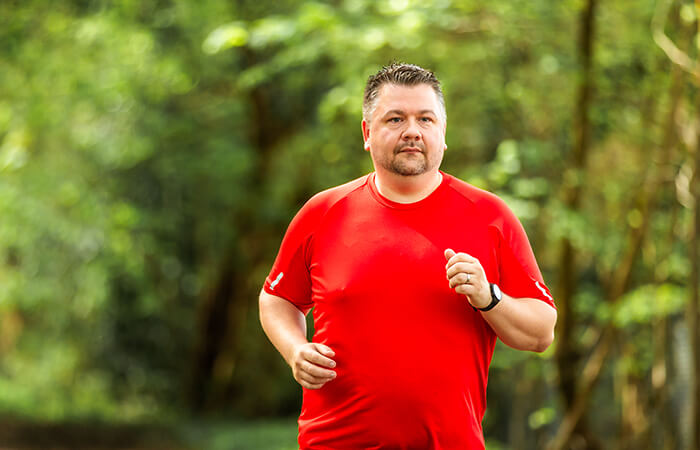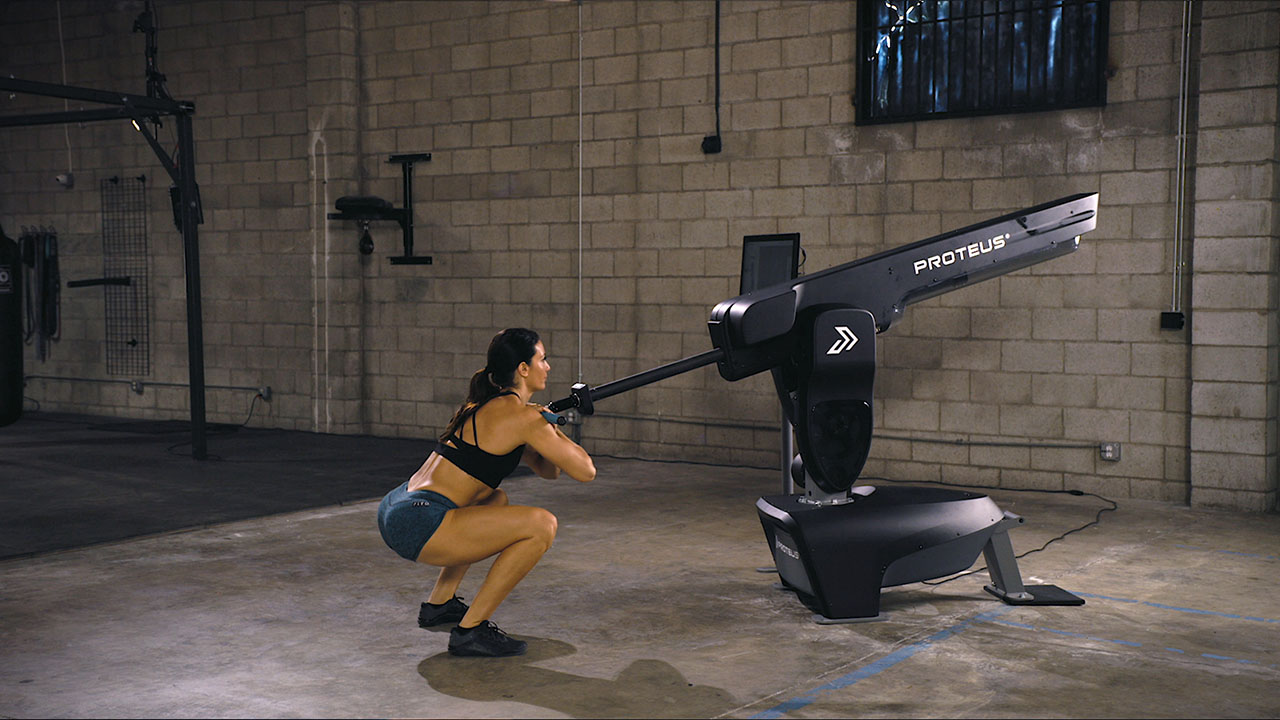

Having good running form can eliminate excess stress, strain and fatigue on the body as well as reduce injuries that can occur while running. Runners sometimes take for granted key running form basics
Keeping these aspects in mind while running can keep you moving toward your goals with limited injuries. Learn how to perfect your running form to be ready for your next big run.
When running, your foot hits the ground and your body has to react to the outside elements. During the running movement, your body is either airborne or has one foot on the ground as you move forward. As a result, half of your energy is moving your body forward and the other half is trying to keep yourself from falling down. The better balance you have to react to the surrounding elements and move your body forward, the more relaxed and faster you will be able to run.
Here are a few tips for improving your balance while running:
Cadence refers to the pace of each stride. The optimum cadence is 180 strides per minute (spm) and most people run at about 160 spm. When you maintain 180 spm, you will spend less time on the road, which can help you reach your goals and stay healthy.
How to find and maintain 180 spm:
Good running posture includes keeping your entire body in line, especially your back, shoulders, neck and head. Follow these simple steps to reset your posture:
Mid-foot strike is how your foot lands with each step. Using the mid-foot strike technique reduces the stress placed on the body and diminishes the risk of injuries, such as shin splints and plantar fasciitis.
When using this technique, the arch of your foot should be the first part of the body to hit the ground. This provides a natural suspension of the foot's arch, stretching and bending the instep. The impact is then absorbed when the ankle bends, followed by the knee and hip.
The best way to practice this technique is to do a slow march before each run. Start by marching in place and focus on landing on the arch of your foot. Concentrate on soft landings and not pounding the heel into the ground. This will allow your body to adjust to using the mid-foot strike and prevent injuries in the future.
The relationship between the arm and leg swing is critical for the runner to move in a straight line. Running is a coordinated movement between the upper body and the lower body. Many runners think the lower body is the most important part of running. However, the arm swing controls what the lower body does. If your arms cross the midline of your upper body, you lower body has to counteract that swing. What will happen is that your lower body will copy your upper body, causing your feet to cross the midline of your body. Over time, this will cause injury, usually causing pain in the lower back, outside of the knee (IT band) or ankle.
The arm swing plays a major role in the balance and momentum of the body during running. The faster you move your arms forward and backward, the faster your legs will follow. Swinging the arms forward and backward helps propel the body forward in a straight line. If the arms swing across the body, your body will be moving right and left, causing you to use more energy and be less efficient.
Here are two drills that will help you work on your arm swing and balance to propel your body to move straight forward:
Keeping these aspects in mind while running can keep you moving toward your goals with limited injuries. Learn how to perfect your running form to be ready for your next big run.
Balance
When running, your foot hits the ground and your body has to react to the outside elements. During the running movement, your body is either airborne or has one foot on the ground as you move forward. As a result, half of your energy is moving your body forward and the other half is trying to keep yourself from falling down. The better balance you have to react to the surrounding elements and move your body forward, the more relaxed and faster you will be able to run.Here are a few tips for improving your balance while running:
- Get off the road: Trail runs will help you improve your balance without even thinking about it. The uneven terrain will cause you to adjust every step and increase your balance.
- Barefoot running: Taking your shoes off and doing some grass running is great for balance. Add a few striders before or after your run on the grass to improve your balance and also improve the strength in your feet, ankles and shins.
- Balance workouts: Improve your balance by adding a few balance exercises to your cross training. Single-leg squats, squats on a wobble board or single-leg calf raises without support are great ways to improve your balance.
Cadence
Cadence refers to the pace of each stride. The optimum cadence is 180 strides per minute (spm) and most people run at about 160 spm. When you maintain 180 spm, you will spend less time on the road, which can help you reach your goals and stay healthy.How to find and maintain 180 spm:
- Find your current cadence by setting a metronome to your stride. The beats per minute (bpm) equal your spm.
- Start by practicing the marching routine that is covered in the mid-foot section above. Then simply move your feet faster, while still focusing on landing on the arch of the foot softly. The general rule is to increase by five spm per week. If you increase too quickly there is a higher risk of injury.
- When you get to 180 spm, there are tools to help you maintain that level. Songs that are 180 bpm are available on the Internet to download to your iPod or phone.
Posture
Good running posture includes keeping your entire body in line, especially your back, shoulders, neck and head. Follow these simple steps to reset your posture:
- Stand tall
- Point toes forward
- Tuck in stomach
- Reach to the sky
- Bring arms down and relax body
- Back should be upright and straight, and shoulders should be relaxed and slightly pulled back
- Make sure chin is in a neutral position
- Keep your gaze directed ahead
Mid-foot strike
Mid-foot strike is how your foot lands with each step. Using the mid-foot strike technique reduces the stress placed on the body and diminishes the risk of injuries, such as shin splints and plantar fasciitis.When using this technique, the arch of your foot should be the first part of the body to hit the ground. This provides a natural suspension of the foot's arch, stretching and bending the instep. The impact is then absorbed when the ankle bends, followed by the knee and hip.
The best way to practice this technique is to do a slow march before each run. Start by marching in place and focus on landing on the arch of your foot. Concentrate on soft landings and not pounding the heel into the ground. This will allow your body to adjust to using the mid-foot strike and prevent injuries in the future.
Arm swing
The relationship between the arm and leg swing is critical for the runner to move in a straight line. Running is a coordinated movement between the upper body and the lower body. Many runners think the lower body is the most important part of running. However, the arm swing controls what the lower body does. If your arms cross the midline of your upper body, you lower body has to counteract that swing. What will happen is that your lower body will copy your upper body, causing your feet to cross the midline of your body. Over time, this will cause injury, usually causing pain in the lower back, outside of the knee (IT band) or ankle.The arm swing plays a major role in the balance and momentum of the body during running. The faster you move your arms forward and backward, the faster your legs will follow. Swinging the arms forward and backward helps propel the body forward in a straight line. If the arms swing across the body, your body will be moving right and left, causing you to use more energy and be less efficient.
Here are two drills that will help you work on your arm swing and balance to propel your body to move straight forward:
Arm swing drill
- Start in a seated position with your arms bent at the elbows 90 degrees next your body.
- Swing the arms from the shoulders in opposite directions, like you are jogging.
- Do 10-second spirits with your arms by swinging them as quickly as possible forward and backward. Then, return to a jog with your arms for 10 seconds. Repeat 10 times.
- Remember to relax your shoulders and hands as you swing your arms.
- You may also do the drill standing with your feet shoulder-width apart and with a staggered stance.
Walk/run form
- Start by stepping with your right foot while your left arm goes forward and your right arm goes back. Your arm should be bent at the elbow 90 degrees.
- Do a calf raise on your right foot, then step.
- Step with your left foot, while the right arm moves forward and the left arm moves back. Do a calf raise on your left foot, then step.
- Repeat this sequence for 10 yards.
- Once walking form is perfected, you may increase your tempo to a fast walk and graduate to a run.



